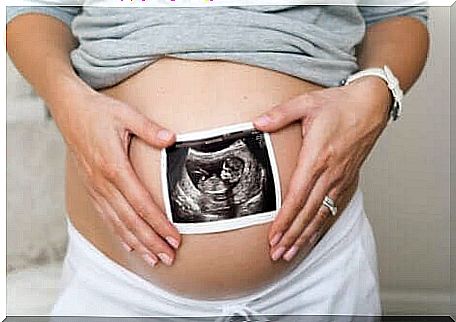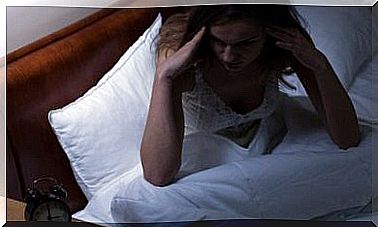Do Pregnancy Tests That You Take At Home Work?

A pregnancy test works by detecting the human chorionic gonadotropin (hCG) hormone, which the body produces when a fertilized egg implants in the lining of the uterus during early pregnancy. Pregnancy tests that you take at home should be done with the first urine of the day. However, doctors recommend taking a blood test to confirm pregnancy.
Blood tests are performed at a doctor’s office and detect small amounts of the hCG hormone. Thus, they are able to detect a pregnancy in its early stages. Usually women see a doctor after taking a test at home.
Pregnancy tests that you take at home are the most popular and easiest to do. They are usually inexpensive, can be purchased at any pharmacy, and women can administer them themselves. But how accurate are they?
Early symptoms of pregnancy

A woman takes a pregnancy test when she suspects she may be pregnant. In addition to missing a period, she must feel some of the early symptoms, either for a few days or one or more weeks in a row.
The truth is that according to the National Institutes of Health , missed periods can have a number of causes, including taking birth control pills, conditions such as diabetes and polycystic ovary syndrome, eating disorders and certain medications. Now, what are the early signs of pregnancy?
Nausea and / or vomiting
These traditional symptoms can begin at any time between two and eight weeks of pregnancy. This is due to the effect of human chorionic gonadotropin (hCG). However, it does not always occur, and some women tend to have vomiting-free pregnancies.
In fact, according to a survey of early pregnancy symptoms by the American Pregnancy Association , 25% of women surveyed indicated that nausea was the first sign of pregnancy.
Mild intermittent bleeding or haemorrhages
This is known as spotting. It occurs when the embryo is implanted in the uterus between six and 12 days after conception. Some women experience intermittent bleeding and cramps. Nevertheless, only 3% of women identified spotting as their first sign of pregnancy.
Take a pregnancy test at home if you experience breast changes
Higher levels of hormones and changes in breast structure cause tenderness in the nipples and breasts from three to four weeks after conception. Approximately 17% of women reported that a change in the breasts was the first symptom of pregnancy.
Frequent urination

The urge to urinate is common during pregnancy. hCG increases the flow of blood into the pelvic area of the body and thus the urge to urinate. This usually happens between week six and eight of the pregnancy.
Fatigue or tiredness
Due to increased progesterone levels and the body’s efforts to support pregnancy, pregnant women usually feel tired during early pregnancy. This symptom disappears in the second trimester and may return near term.
Headache
Headaches are common during the first trimester of pregnancy. The main causes are hormones, stress and strain on the body from carrying extra weight.
Pregnancy tests that you take at home
You can buy a pregnancy test that you can take at home at any pharmacy. These urine tests include a test strip or collection container, depending on the brand.
To take a pregnancy test at home, follow these steps:
- Place the test strip under the urine stream for five to ten seconds. If the pregnancy test has a collection container, pee in it and insert the test strip into the container for five to ten seconds. After the specified time, the test will show the result of the reaction between the reagent on the test strip and the hCG.
- The test strip can show a plus or minus sign, a single or double line, or other signs or symbols in the test window that tell you if you are pregnant or not. Each test comes with instructions.
There have been cases of false positives. In other words, the test said the woman was pregnant, even though she was not. This can happen if she aborted shortly after the fertilized egg was attached to the uterine lining, or if she takes a pregnancy test shortly after undergoing fertility treatment.
Despite the above, if the test shows that you are pregnant, you must make an appointment with your doctor to confirm the results with a blood test, or to detect what is happening in your body.
If you do not have access to any of these scientifically proven tests, other tests according to anecdotal data from popular culture may work. When they detect the reaction of human chorionic gonadotropin (hCG) with the compounds. These tests are not scientifically proven.

Pregnancy tests that you take at home: The shampoo test is another popular pregnancy test that you take at home
Collect your urine in a plastic container. Then mix shampoo and water in another container. This will result in a soap mixture, which you should mix with the urine.
If the mixture foams, it should be positive. People claim that it works because hCG will react with the shampoo and make it foam. Yet it has not yet been proven by science.
Pregnancy tests you take at home: Sugar
Put a tablespoon of sugar in a plastic container and then pour a tablespoon of urine over it. If the sugar clumps together, the result is positive. On the other hand, if it dissolves quickly, the result is negative. People say that it works because the pregnancy hormone does not allow sugar to dissolve. Nevertheless, there is no scientific evidence on the matter.
Pregnancy tests you take at home: Toothpaste
To use the pregnancy test with toothpaste, put some toothpaste in a container and then pee in it. The toothpaste should be white, because the idea is to see if it turns blue. If it does, the result is positive. Popular culture says that it works because toothpaste changes color when it comes in contact with hCG.
Can you trust the results of pregnancy tests that you take at home?

The results of pregnancy tests that you take at home are generally accurate. Only in certain situations, such as those we mentioned above, do false positives occur.
The last tests we mentioned in this article, on the other hand, are anecdotal. Science only supports the effectiveness of pregnancy tests purchased at pharmacies and blood tests from your doctor.
If you have any of the early symptoms of pregnancy, it is best to take a test to see if you are pregnant or not. And, of course, go to your trusted doctor.









